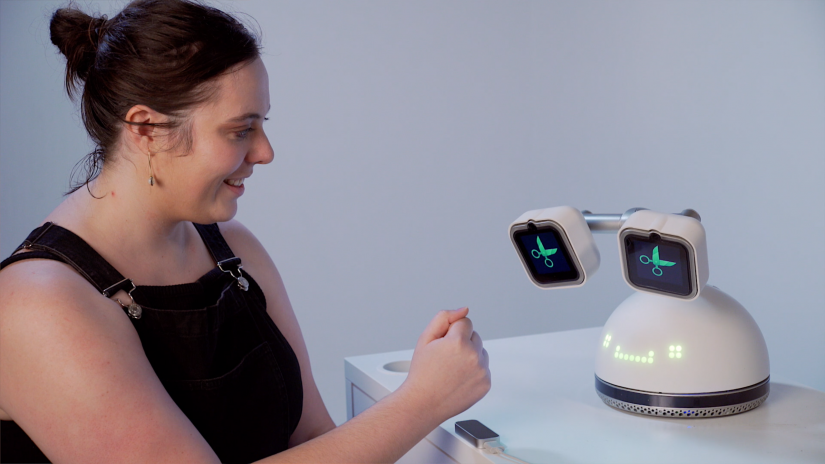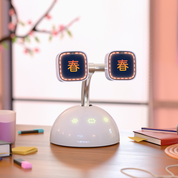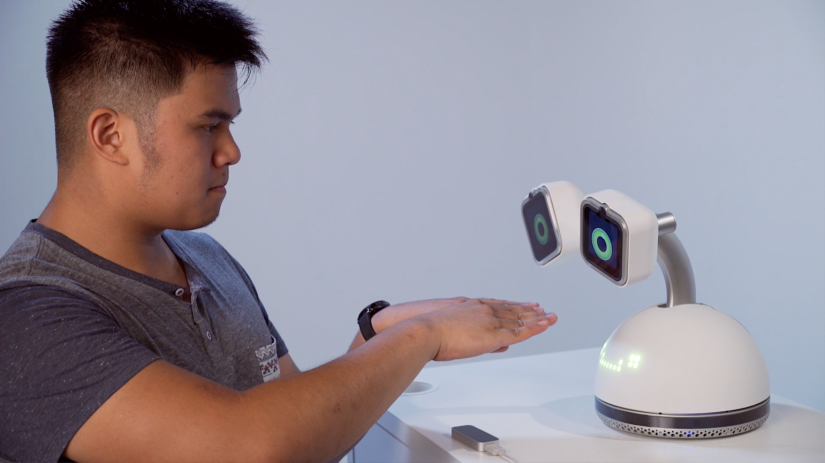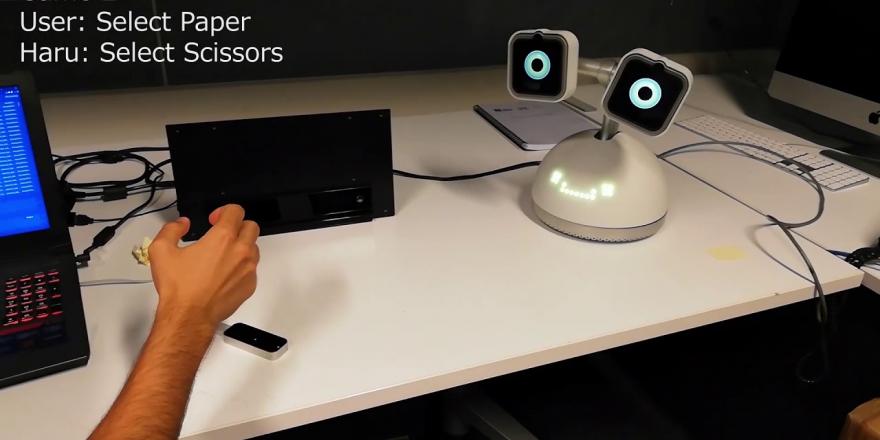The result is Haru, a table-top-size robot to be used as an experimental research platform for studying human-robot interactions. But that’s where the impersonal description ends. Haru is both endearing and engaging, thanks to the work on appearance and expressiveness by Deborah Szapiro, an award-winning creative director and lecturer in animation at UTS.
Our goals were to design a personal robot that people really felt a connection with.
— Randy Gomez, senior scientist, Honda Research Institute
Why adopt a multi-disciplinary approach in robotics design? HRI senior scientist Randy Gomez has explained: “Our goals were to design a personal robot that people really felt a connection with. This meant that, in taking on the challenge of designing Haru, aesthetics and communication were very important.”
Szapiro was impressed by Honda’s holistic approach and saw it as an opportunity for robotics to have social impact.
“One thing we looked at is how we can enhance human contact,” she says. “We want a robot that encourages human to robot interaction but also human to human interaction – through storytelling, games and interactive telepresence, for example.”
In the past, experiments in social robot design often failed because the robots weren’t interesting or engaging enough. So Haru’s appearance was crucial to its success.
“Often people see design as simply about subjective aesthetics and animation as just a children’s format,” says Szapiro. “But both have so much to offer robotics. As an animator I have to understand humans in order to be able to communicate.
“Every design decision has a social impact,” she says. “I was interested in how I could apply what I do with the technical abilities at Honda to achieve social impact.”
An early discussion between Szapiro and Gomez was that Haru should be gender neutral and that people should be able to personalise the robot – ideas that immediately appealed to Honda.
“As so much of human communication is expressed through the eyes, we designed around 100 variations of the eyes – some standard, others with idiosyncratic eye designs in place of an iris,” Szapiro says.
A variety of movements, voices and sound effects add to Haru’s huge canvas of expressions.
Some of the emotive actions the researchers designed, and some of their requests, tested the limits of Honda’s engineering, Gomez told the magazine IEEE Spectrum. This is a good thing, he says, “as it challenges us to find solutions. The relationship is two-way, as our requests also challenge the design and animation team to find solutions.”
Part of the reason for personalising the robot is so people can have a design that’s in sympathy with their age, gender and/or culture.
Personalisation encourages a sense of empowerment, trust and empathy.
— Deborah Szapiro, UTS
Szapiro says “personalisation encourages a sense of empowerment, trust and empathy and gives the person who is using the robot a feeling that they’re not just getting something off the shelf that’s a gadget but that they’re listened to and can be heard by a robot that understands what they want.”
She thinks the design is reflective of Japanese culture, which values the dignity of, and shows respect towards, its older citizens.
In the long term, it’s hoped that Haru can become an aid to improving the quality of life for sectors of the community such as the elderly or children. And in these times of social distancing and enforced isolation because of COVID-19, the idea of a safe and friendly robot who brings joy may have growing appeal.
Research team
-
 Deborah SzapiroLecturer, School of Design
Deborah SzapiroLecturer, School of Design -
Kerl GalindoResearch Administrator, School of Design
Faculty
- Faculty of Design, Architecture and Building
- School of Design
Funded by
- Honda Research Institute (HRI)





